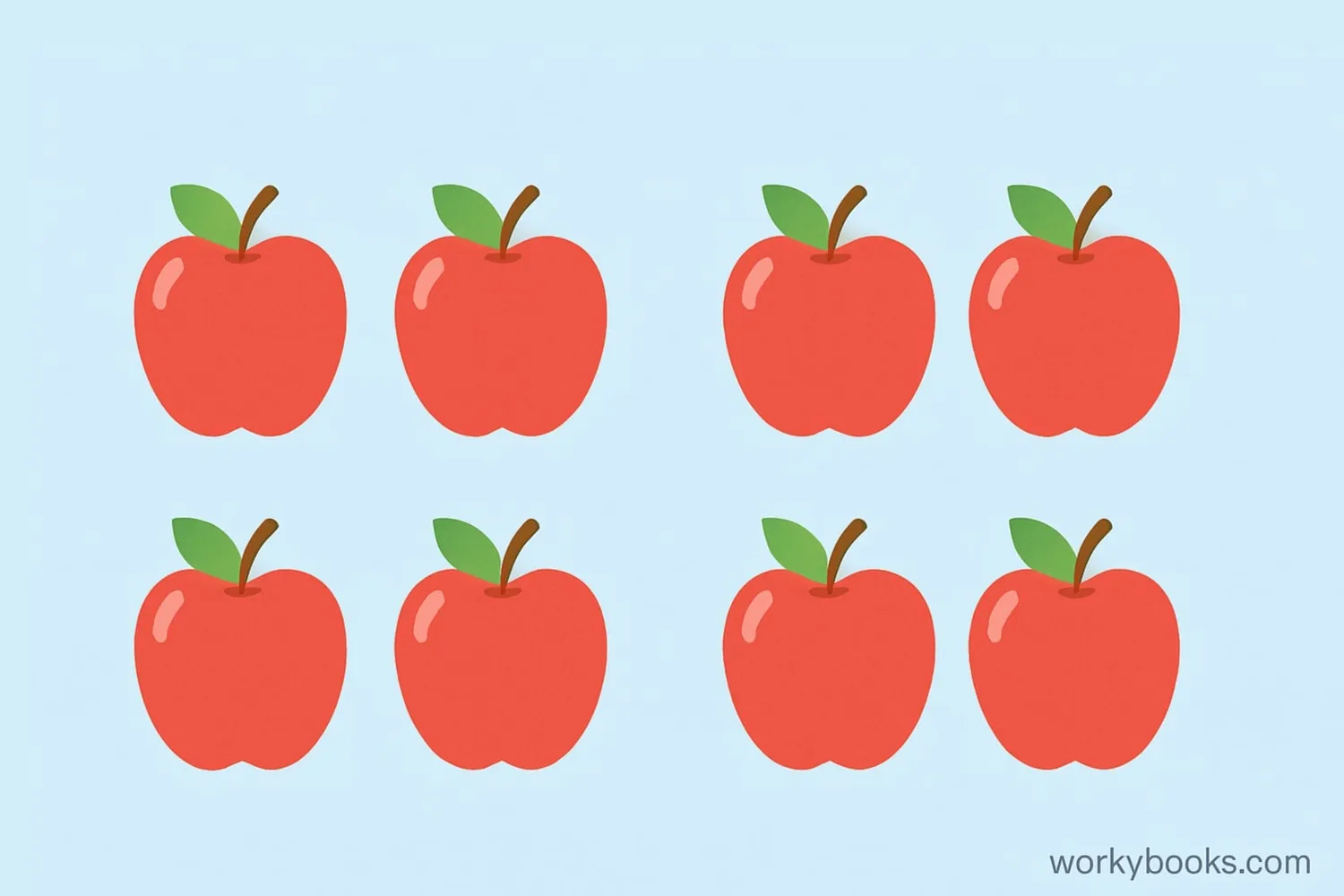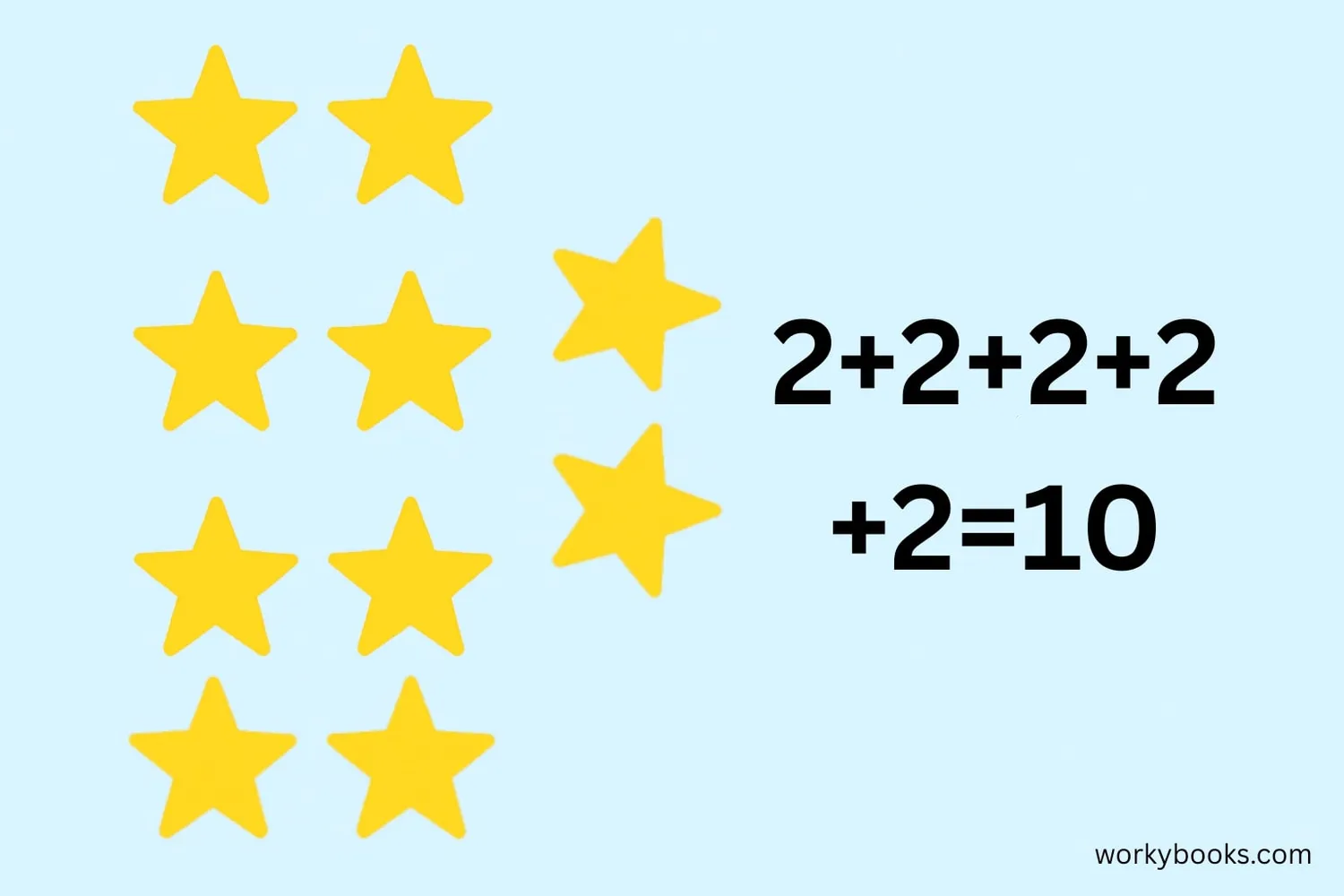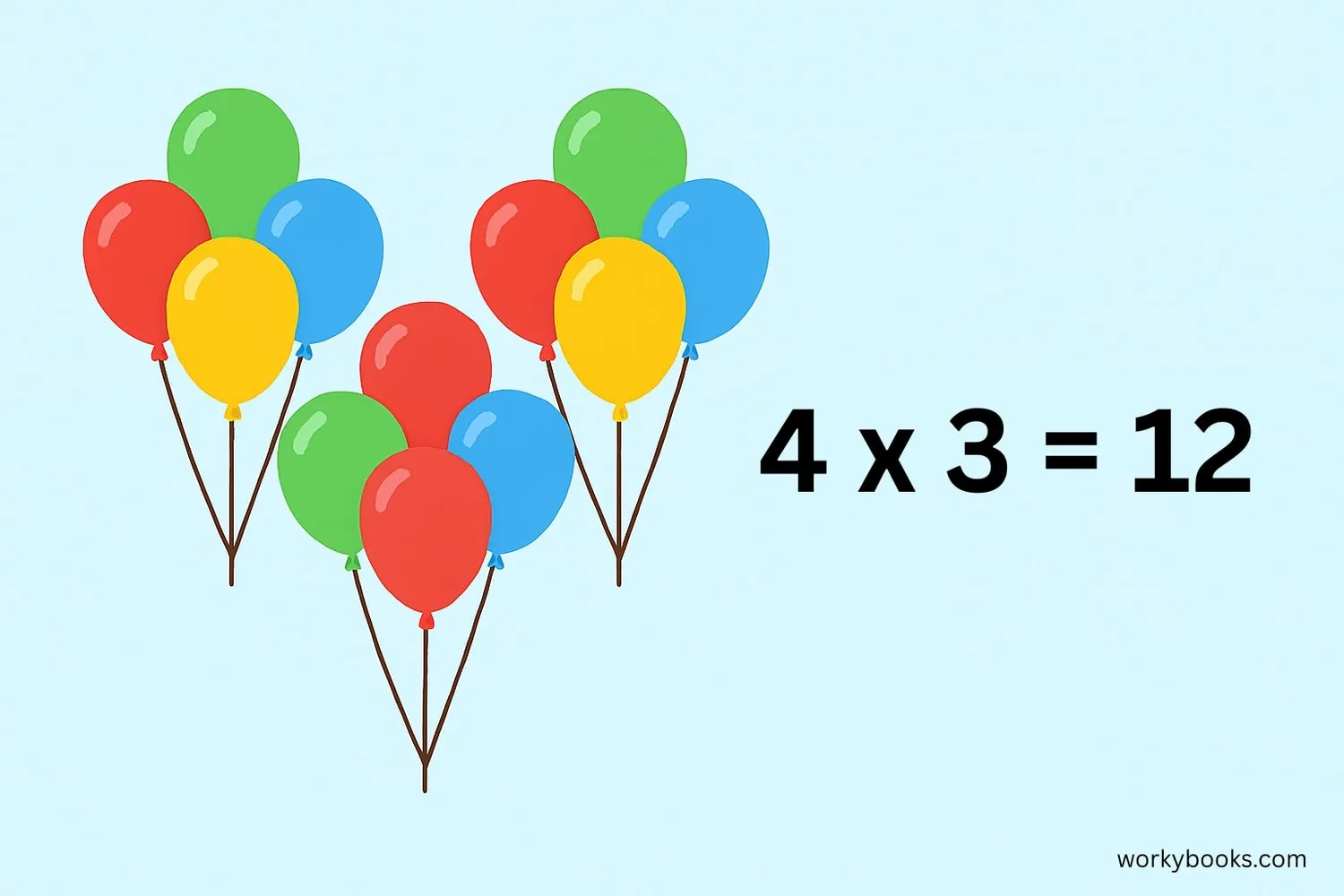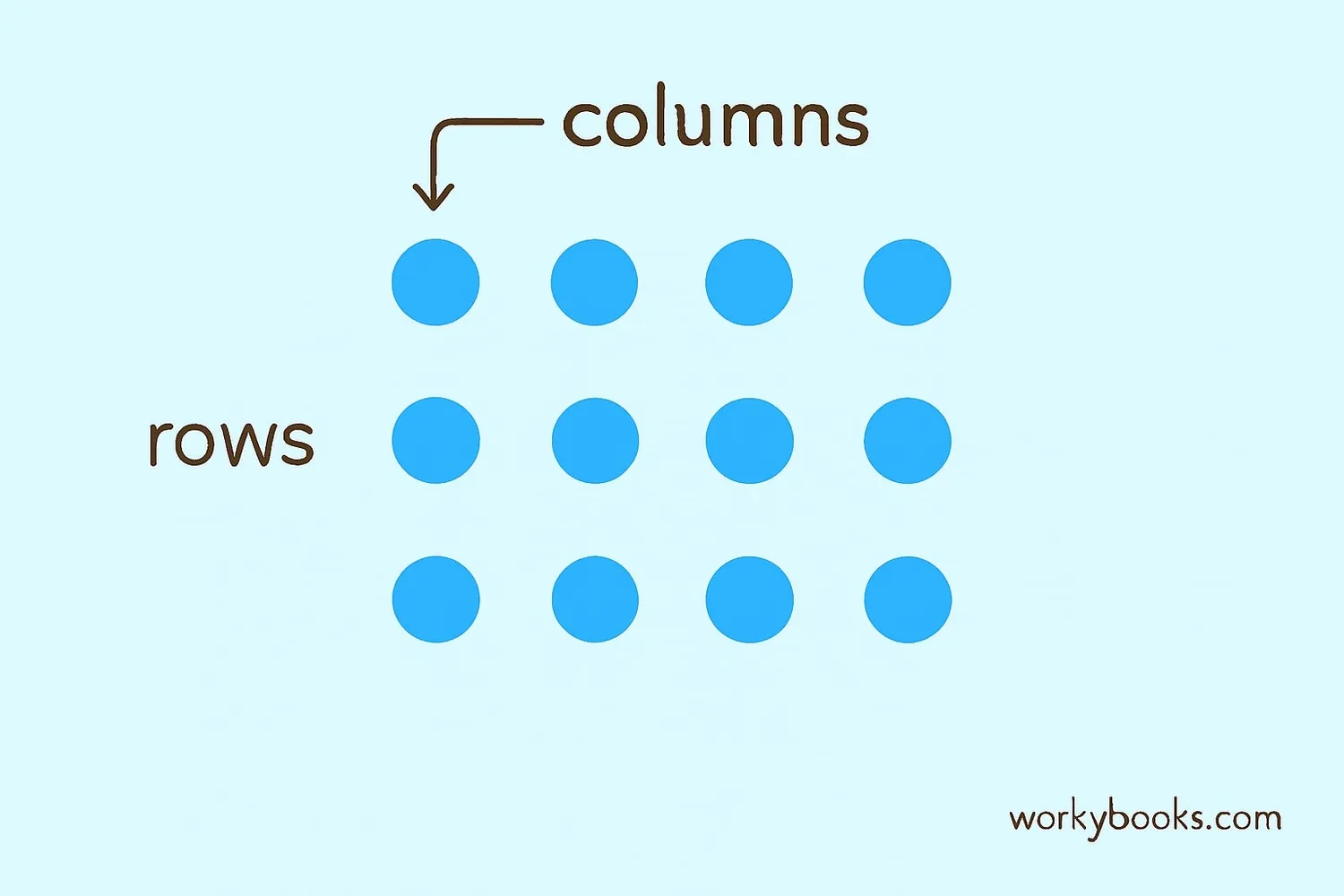Equal Groups - Definition, Examples, Quiz, FAQ, Trivia
Learn about equal groups with easy explanations, visual examples, and practice activities
What are Equal Groups?

Equal groups are collections of items that have the same number in each group. When we have equal groups, it means every group has exactly the same amount.
For example, if you have 3 baskets and each basket has 4 apples, you have equal groups because each basket has the same number of apples.
Understanding equal groups helps us with counting, adding, and eventually with multiplication and division. It's an important math concept that we use in everyday life!
Example 1
4 bags with 5 marbles in each bag = Equal groups
Example 2
3 plates with 2 cookies on each plate = Equal groups
Not Equal Groups
2 boxes with 6 toys and 1 box with 3 toys = Not equal groups
Key Concept
Equal groups have the same number of items in each group. This helps us count and calculate totals more easily.
Equal Groups and Repeated Addition

When we have equal groups, we can use repeated addition to find the total number of items. Repeated addition means adding the same number again and again.
For example, if you have 4 groups with 3 cookies in each group, you can add 3 + 3 + 3 + 3 to find the total number of cookies.
Repeated addition is a helpful strategy when we're working with equal groups because it's faster than counting each item one by one.
Repeated Addition Formula
We add the same number repeatedly based on how many groups we have.
Example 1
3 packs of pencils with 4 pencils each: 4 + 4 + 4 = 12 pencils
Example 2
5 shelves with 2 books each: 2 + 2 + 2 + 2 + 2 = 10 books
Remember
Repeated addition only works when groups are equal. If groups have different amounts, we need to add each group separately.
Equal Groups and Multiplication

Multiplication is a faster way to do repeated addition. When we have equal groups, we can multiply to find the total quickly.
The multiplication sentence tells us how many groups we have and how many items are in each group.
For example, 4 groups of 3 cookies can be written as 4 × 3 = 12. This is much faster than writing 3 + 3 + 3 + 3 = 12!
Multiplication Formula
Multiplication helps us quickly find the total when we have equal groups.
Example 1
4 boxes with 6 cupcakes each: 4 × 6 = 24 cupcakes
Example 2
5 rows with 8 cars each: 5 × 8 = 40 cars
Example 3
3 teams with 9 players each: 3 × 9 = 27 players
Math Tip
In multiplication, the order doesn't matter: 4 groups of 3 is the same as 3 groups of 4. Both equal 12!
Equal Groups as Arrays

Arrays are arrangements of objects in rows and columns that help us see equal groups. Each row has the same number of items, and each column has the same number of items.
For example, an array with 3 rows and 4 columns shows 3 groups of 4, or 4 groups of 3. Both give us the same total of 12.
Arrays help us visualize multiplication and understand how equal groups work. They're like a picture of multiplication!
Example 1
A 2 × 5 array shows 2 rows of 5, which is 2 groups of 5, or 10 total
Example 2
A 4 × 3 array shows 4 rows of 3, which is 4 groups of 3, or 12 total
Array Formula
Arrays help us see the connection between equal groups and multiplication.
Array Tip
You can find arrays in everyday life: windows on a building, eggs in a carton, or seats in a classroom!
Equal Groups Practice Quiz
Test your understanding of equal groups with this 5-question quiz. Choose the correct answer for each question.
Frequently Asked Questions
Here are answers to common questions about equal groups:
Math Trivia
Discover interesting facts about math and equal groups:
Ancient Multiplication
Ancient Egyptians used a method called "doubling" to multiply numbers, which was based on the concept of equal groups. They would repeatedly double numbers to find products.
Multiplication Symbol
The multiplication symbol (×) was introduced by mathematician William Oughtred in 1631. Before that, people wrote out "times" or used other notations for multiplication of equal groups.
Equal Groups in Shopping
When you buy items in packs (like 6-packs of soda or 12-packs of pencils), you're using equal groups! Stores often package items this way to make counting and pricing easier.
Arrays in Nature
Arrays and equal groups appear in nature too! Honeycombs have hexagonal cells arranged in arrays, and seeds in sunflowers are arranged in spiral patterns that form equal groups.





